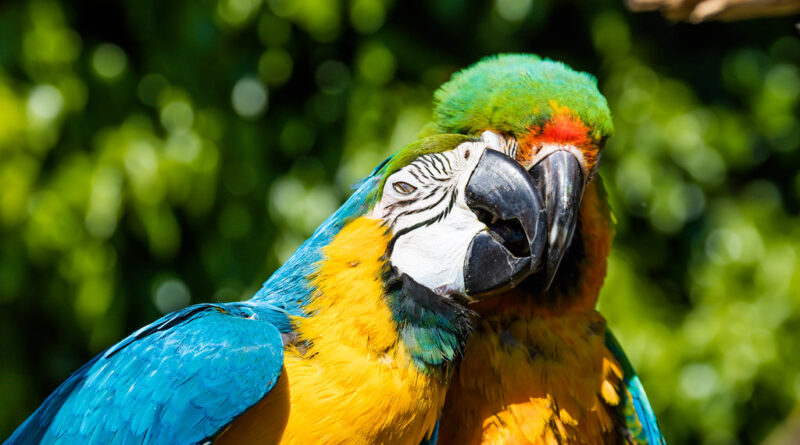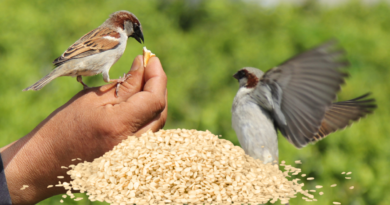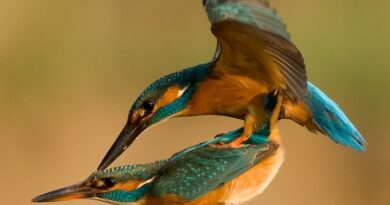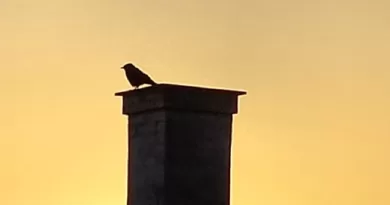How Do Birds Reproduce: A Fascinating Journey into Avian Reproduction
Birds, with their vibrant colors, melodious songs, and diverse behaviors, have captured the human imagination for centuries. One of the most intriguing aspects of avian life is their method of reproduction. In this comprehensive guide, we will delve into the world of avian reproduction, exploring the intricate processes that ensure the continuation of various bird species. From courtship rituals to nest-building, egg-laying, and chick-rearing, we’ll unravel the mysteries of how birds reproduce.
I. Courtship and Mate Selection
Before the journey of avian reproduction begins, courtship and mate selection play crucial roles. Birds exhibit an astonishing array of courtship behaviors, from elaborate dances and aerial displays to vocal performances. These behaviors are designed to attract potential mates and establish strong bonds.
- Visual Displays: Male birds often display vibrant plumage, perform intricate dances, and showcase impressive physical feats to attract females. Peacocks, for instance, fan their iridescent tail feathers in elaborate courtship displays.
- Vocalizations: Many bird species rely on their melodious songs to attract mates. The nightingale’s enchanting song, heard during the breeding season, is a classic example of this vocal courtship strategy.
- Nest Building: Some bird species construct intricate nests to showcase their nest-building abilities. Bowerbirds, for instance, create elaborate bowers adorned with carefully chosen objects to impress females.
See Also: How Do Birds Mate? (And Do Birds Mate With Other Species?)
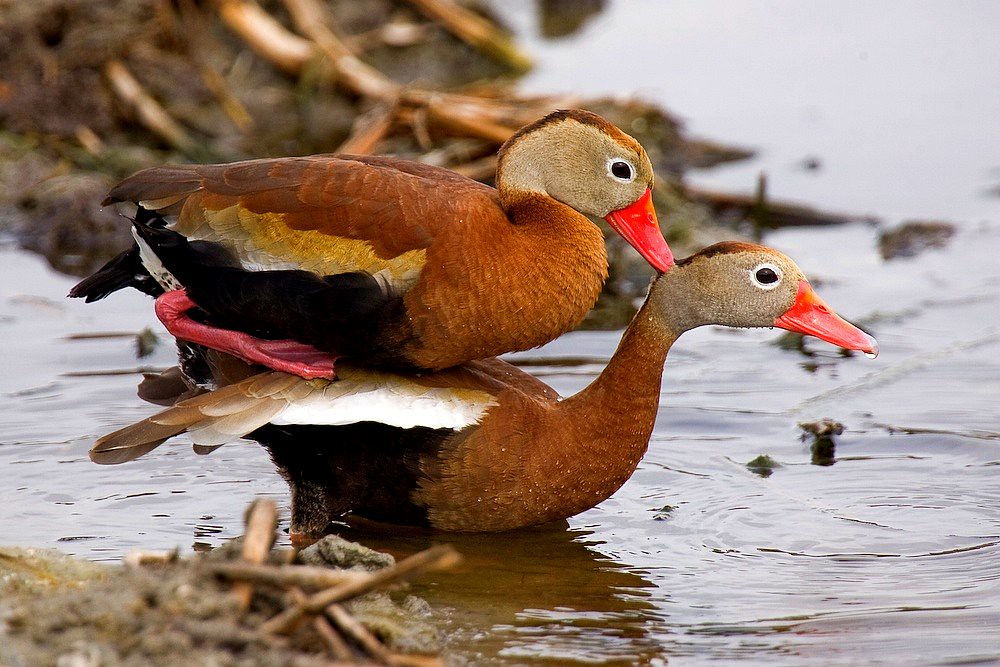
II. Mating and Fertilization
Once courtship is successful, mating occurs, leading to fertilization of the female’s eggs. Bird reproduction is notable for its internal fertilization process.
- Cloacal Kiss: Birds do not have separate genitalia like mammals. Instead, they have a cloaca, a single opening for excretion and reproduction. During mating, males and females engage in a “cloacal kiss,” where sperm is transferred from the male’s cloaca to the female’s.
III. Egg Formation and Laying
After fertilization, the female’s body undergoes a fascinating process of egg formation and laying.
- Ovulation and Egg Formation: A female bird’s ovaries produce and release eggs during the breeding season. The yolk, containing essential nutrients, is gradually enveloped by layers of egg white (albumen) and protective membranes.
- Eggshell Formation: The eggshell is formed from calcium carbonate in the female’s bloodstream. Specialized shell glands secrete the shell’s components, resulting in a protective layer that prevents damage and water loss.
- Egg Laying: The female lays the developed egg in a carefully selected nesting site. Different bird species have varied preferences for nest locations, ranging from trees and cliffs to the ground and even inside burrows.
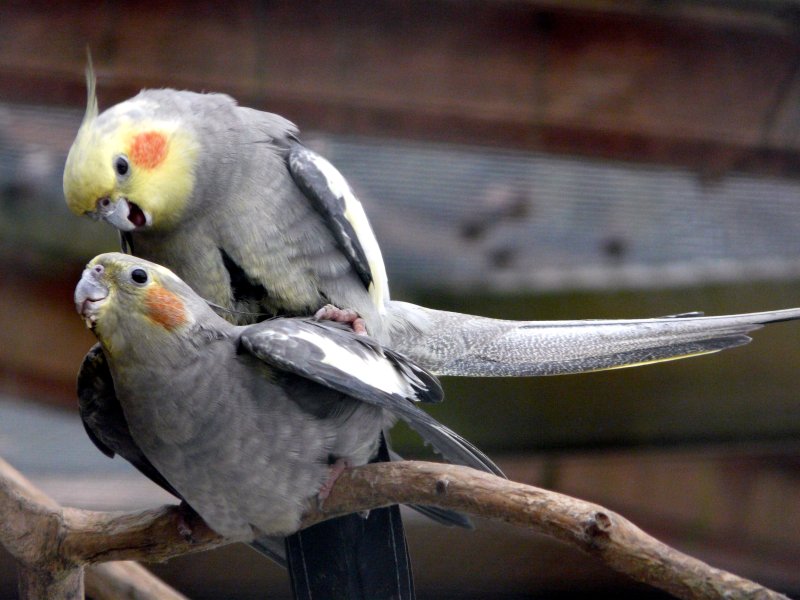
IV. Incubation and Hatching
Once the eggs are laid, the process of incubation begins, during which the parent birds provide the optimal conditions for the eggs to develop.
- Incubation Period: The duration of incubation varies between species, but it involves maintaining a consistent temperature and humidity level. Most often, the female takes on the primary incubation duties.
- Shared Incubation: In some bird species, both parents share the responsibility of incubating the eggs. Emperor penguins, for example, take turns incubating their eggs on their feet in harsh Antarctic conditions.
V. Chick Development and Parental Care
As the eggs hatch, a new chapter of avian reproduction begins with the growth and care of the chicks.
- Feeding Chicks: Initially, chicks are fed regurgitated food by their parents. As they grow, parents transition to providing a combination of regurgitated and solid food.
- Fledging: The fledgling stage marks the period when young birds acquire their flight feathers and develop the skills necessary for survival. Parental care remains vital during this time, as fledglings learn to forage and navigate their environment.
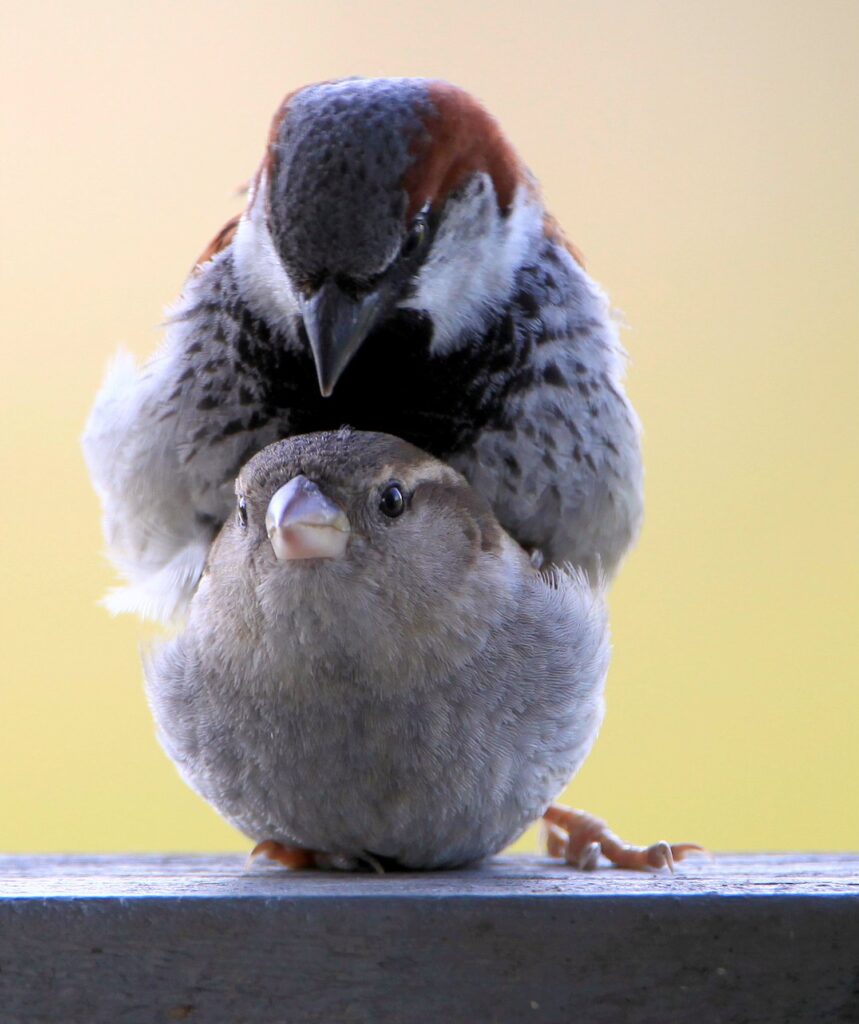
Conclusion
The world of avian reproduction is a captivating journey that showcases the complexity and diversity of life in the bird kingdom. From courtship rituals that showcase beauty and skill to the intricacies of egg formation, incubation, and chick-rearing, the process of how birds reproduce is a testament to the remarkable adaptations that have enabled avian species to thrive across diverse habitats. As we continue to explore the wonders of nature, the intricate mechanisms of bird reproduction remain a source of awe and inspiration, inviting us to appreciate the delicate balance of life that exists in our natural world.
Enjoyed this Article? You May Also Like:
- How Do Birds Mate? (And Do Birds Mate With Other Species?)
- Can birds eat pistachios? Benefits and Feeding Tips
- How to Get a Bird Out of Your Garage: The Ultimate Guide
- What is Tweety Bird’s Gender? The Answer Will Surprise You
- How To Get Bird Poop Off Car?
FAQs
1. How do birds reproduce?
Birds reproduce through internal fertilization. During mating, a male and female bird engage in a “cloacal kiss,” where sperm is transferred from the male’s cloaca to the female’s. The female’s ovaries produce eggs, which are then fertilized internally before being laid.
2. What is courtship behavior in birds?
Courtship behavior in birds involves a series of actions and displays that help attract mates and establish strong pair bonds. This can include vocalizations, dances, colorful displays of plumage, nest-building demonstrations, and more.
3. How do birds select their mates?
Birds often choose mates based on factors such as physical appearance, vocalizations, displays of strength or skill, and compatibility. Successful courtship displays and the ability to provide resources play a significant role in mate selection.
4. Why do male birds have elaborate plumage and displays?
Male birds often have vibrant plumage and elaborate displays to attract females. These displays serve as indicators of the male’s health, genetic fitness, and ability to provide for offspring. Females use these displays to assess potential mates.
5. Where do birds lay their eggs?
The location where birds lay their eggs, known as the nesting site, varies based on the species. Some birds nest in trees, bushes, or cliffs, while others nest on the ground, inside burrows, or even in man-made structures.
6. How is the eggshell formed?
The eggshell is formed from calcium carbonate that is deposited by specialized shell glands in the female bird’s reproductive tract. The shell’s components are secreted gradually, resulting in a protective layer that encases the developing embryo.
7. How do birds incubate their eggs?
Incubation involves maintaining a consistent temperature and humidity level to promote the development of embryos inside the eggs. The parent birds, typically the female, sit on the eggs to provide warmth. In some species, both parents take turns incubating.
8. How do parent birds care for their chicks after hatching?
Parent birds feed their chicks regurgitated food during the early stages. As the chicks grow, parents transition to providing a combination of regurgitated and solid food. They also protect the chicks from predators and teach them essential survival skills.
9. What is fledging?
Fledging is the stage when young birds develop the ability to fly. During this period, chicks acquire their flight feathers and practice flying, foraging, and navigating their environment. Parental care remains important as fledglings learn to fend for themselves.
10. Are there any bird species with unique reproduction strategies?
Yes, there are several bird species with unique reproduction strategies. For instance, some species, like cuckoos, practice brood parasitism, where they lay their eggs in the nests of other bird species. The host bird then raises the parasitic chick.
11. How do birds ensure the survival of their offspring in harsh environments?
Birds have evolved various strategies to ensure the survival of their offspring in harsh environments. For instance, some species build well-insulated nests, while others adjust their feeding behaviors to adapt to changing conditions.
12. Do all bird species exhibit elaborate courtship behaviors?
While many bird species exhibit elaborate courtship behaviors, not all birds engage in complex displays. Some species rely on more subtle cues or simple behaviors to attract mates, depending on their ecological niche and social structure.
13. How long does the entire reproductive process take for birds?
The duration of the avian reproductive process varies widely among species. Some birds complete the process, from courtship to fledging, within a few weeks, while others might take several months, depending on factors like the incubation period and chick development time.
14. What is the role of hormones in avian reproduction?
Hormones play a crucial role in regulating avian reproduction. Hormonal changes trigger behaviors associated with courtship, egg-laying, incubation, and chick-rearing. These changes are essential for coordinating the various stages of the reproductive cycle.
15. How do birds ensure genetic diversity within their populations?
Birds ensure genetic diversity by mating with different individuals from their population. This genetic mixing helps prevent inbreeding and maintains a healthier and more adaptable population.
16. Are there any risks or challenges associated with avian reproduction?
Avian reproduction comes with its own set of challenges, including predation on eggs and chicks, competition for resources, and environmental factors that can affect the success of nesting and chick-rearing.
17. How can human activities impact bird reproduction?
Human activities such as habitat destruction, pollution, and climate change can disrupt bird reproduction by altering nesting sites, food availability, and overall environmental conditions. Conservation efforts are essential to protect bird populations and their reproductive success.
Exploring the intricate world of bird reproduction sheds light on the remarkable adaptations and behaviors that ensure the survival of various bird species. These FAQs provide insight into the fascinating processes that govern avian reproduction and contribute to the rich tapestry of life in the animal kingdom.

